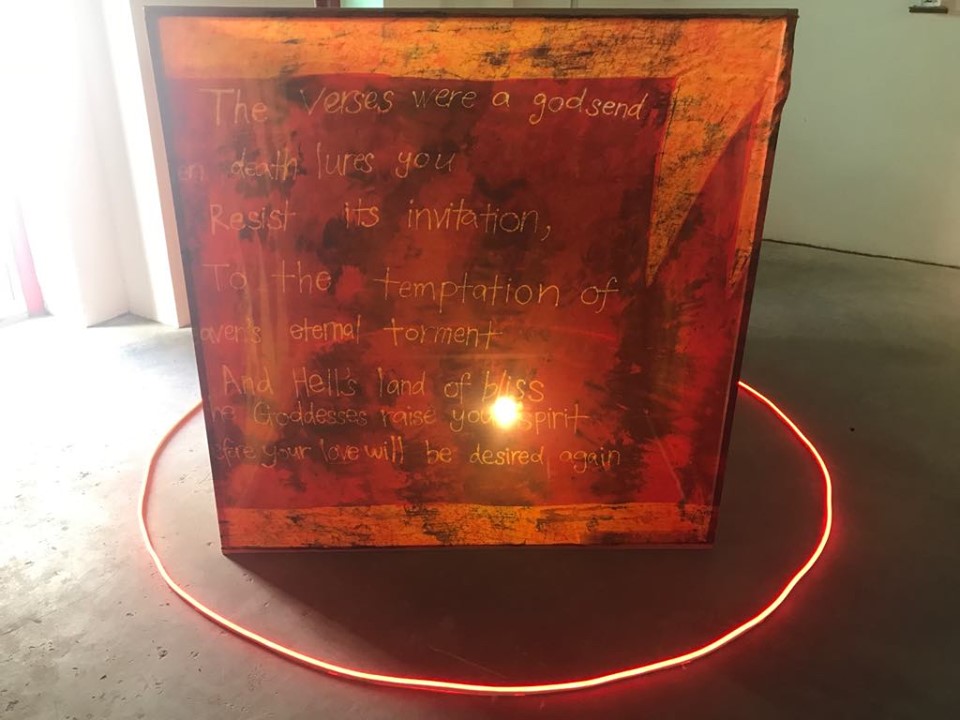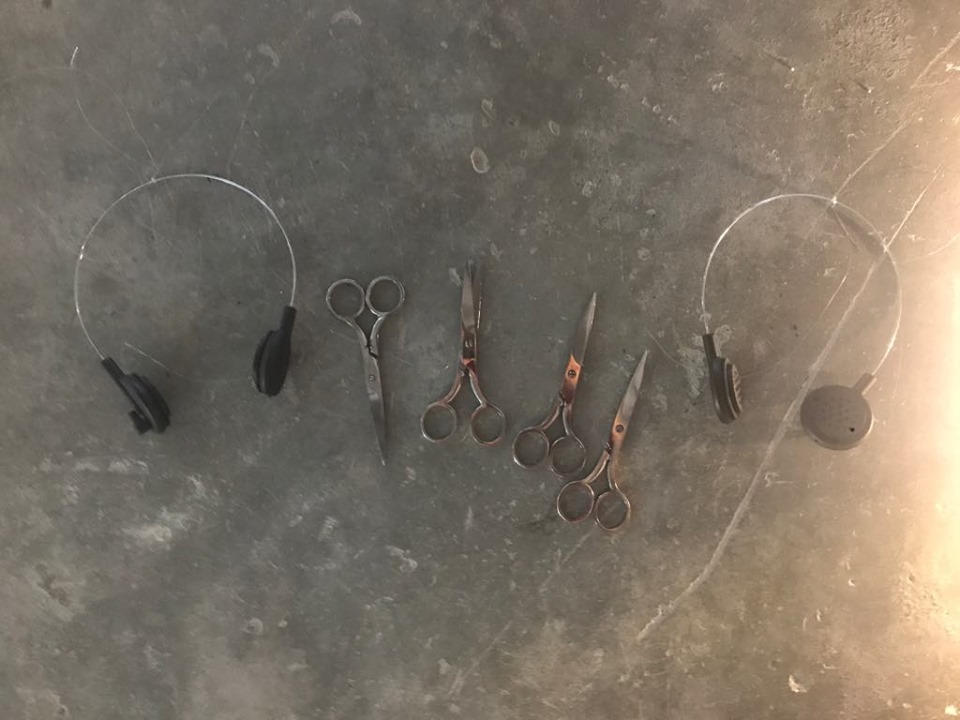Of spirituality in a contemporary age

In this group exhibition, six artists – Ila, Nhawfal Juma’at, Huijun Lu, Noor Iskandar, Fajrina Razak and Dzaki Safaruan – represented the metaphysical journey of the individual.The artists were predominantly Muslims and the show was supported by the Islamic association Angkatan Pelukis Aneka Daya (APAD). However, as the organisers pointed out, this was not a Muslim show. Instead the focus was on spirituality in an expanded sense, each artist drawing from their particular background and artistic research.
"We were not focussing on one particular religion," said artist Fajrina Razak. "Yes, religion was addressed during the show, but our assumption is that spirituality is so much more than that. To me, it's the connection between all living things – humans, animals and the natural world."
Exhibiting about spirituality assumes particular significance in the Singaporean context, where religious and cultural narratives are still in the making and as such are continuously being explored by artists.
Artist Noor Iskandar pointed out that it is not that spirituality is non-existent in Singapore, it is just that it is not highlighted enough in art and society: "I feel those deeper questions about the meaning of life have always been there. It's just that perhaps, in the hyper-pragmatic Singaporean context, we tend to fight shy of all the nuances."
A multi-faith melting pot
Fajrina Razak emphasised how Singapore stands out from to its Southeast Asian neighbours: “Singapore is secular country, but we are surrounded by countries that are currently in the grip of pronounced religious nationalism. At the moment Malaysia and Indonesia are politicising religion. So as a secular country, how do we go about maintaining this multi-faith harmony?"

"Singapore is extremely diverse," noted artist Noor. "We are part of this Malay peninsula, we were part of bigger empires hundreds of years ago, and yet we live in a very heterogeneous place. I want to know where Singapore came from, how Islam came here, and all the counter-narratives. I think when people start questioning the assumptions they have been living with, that's when the beauty emerges."
Walking into the space, a work inviting visitors to re-contextualise religious practices caught the attention immediately. The installation by Dzaki Safaruan was composed of different sets of headphones hanging from the ceiling. The idea was for people to put on the headphones. Expecting to hear something, they would be surprised when no sound came.
To the artist, the silence related to the idea of nothingness found in Zen Buddhism; it was an invitation for visitors to fill the void by creating their own ritual. The threads by which the headphones were suspended from the ceiling were also meant to be cut by visitors. By tying back the headphones and elevating them until they were just out of reach, they created their own personal symbols for spiritual growth.Questioning dogma
Moving into the Islamic context, artist Nhawfal Juma’at looked at how religions have evolved over time. He observed that sometimes rituals survive the specific context in which they were created to become ultimately obsolete. He created a Kaaba to represent this concept. The black cube was off the floor, the light underneath alluding to a sacred, mysterious dimension.
Another work that referenced the Kaaba was created by Fajrina Razak. Her cube of batik cloth was surrounded by a neon circle, thereby representing the artist's spiritual quest: "This was simply me trying to find my inner self, my individuality. The batik alludes to my Javanese ancestry." Dyed on the fabric was a poem by the artist, referencing the idea of scriptural interpretation and misinterpretation over time, and the way patriarchy has interpreted texts for its own convenience.
Poetry and text were present also in the work of Noor Iskandar in his installation called "When It Settles, It Dies". “When I think about spirituality, I think about forgetting, of dying, and also of remembrance,“ said the artist who, on order to create this work, embarked on a journey through the Middle East in the footsteps of his favourite poets.
The memory thread also ran through Ila's work. She showcased photos taken when she was a child on Singaporean beaches that don't exist anymore, because they have since been reclaimed to increase the island's surface. To the artist, the spirituality element is deeply connected to the sea. As a descendant of the Orang Laut ethnicity – the so-called people of the sea – her attachment to the sea may be read as a homecoming.
A personal definition of spirituality
By contrast, the work of artist Huijun Lu was far more abstract. It consisted of a video projection dancing in the corner of the art space, on a window covered by yellow tarp. The work is called "Brain Stroke Portal"„ and explores the transference of energy and flow. "I chose the yellow tarp because in Chinese culture, especially in Singapore, this is used for celebrations and for funerals," explained the artist. "You can interpret the images as a transition between life and death, or moving from one stage of your life to another."
Launched during the eventful Singapore Art Week, the "Pneuma: Of Spirituality in Contemporary Age" exhibition sparked a lot of discussion. "Thanks to the many different cultural backgrounds present in Singapore, the show generated lively and diverse exchange. Lots of visitors insisted on talking to us personally about how our works related to spirituality," the artists confirmed.
This was one exhibition that experimented with the way people interpret spirituality based on their own personal definitions.
Naima Morelli
© Qantara.de 2020
